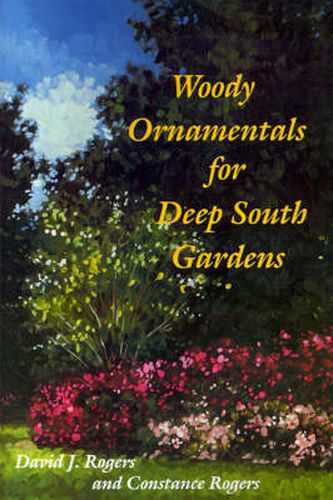Readings Newsletter
Become a Readings Member to make your shopping experience even easier.
Sign in or sign up for free!
You’re not far away from qualifying for FREE standard shipping within Australia
You’ve qualified for FREE standard shipping within Australia
The cart is loading…






This title is printed to order. This book may have been self-published. If so, we cannot guarantee the quality of the content. In the main most books will have gone through the editing process however some may not. We therefore suggest that you be aware of this before ordering this book. If in doubt check either the author or publisher’s details as we are unable to accept any returns unless they are faulty. Please contact us if you have any questions.
This book will be extremely useful for gardeners, nurserymen, extension agents, students, and others interested in woody landscape plants of the Deep South… . The text contains much information based on first-hand observations of the authors in a personal style that is most attractive. The Table of Horticultural Characteristics and Landscape Planning Aids is a welcome addition. –Dr. Frederick G. Meyer, National Arboretum, Washington, D.C.
Woody Ornamentals will take its place alongside the spade and trowel as an indispensable gardening tool for plant lovers in the Deep South. No other book offers such complete information about trees, shrubs, woody vines, and ground covers for USDA Zone 8, an area beginning at the Texas-Mexico border and cutting a wide swath across the Deep South.
When David Rogers retired after a life’s work in botany and returned to his native Deep South, he discovered that many new cultivated plants and rare species from all over the world had been introduced into the gardens and landscapes. This comprehensive work also identifies the native flora that contribute handsome, hardy plants to residential landscaping, the many subtropical trees and shrubs that do not grow in more northerly gardens, and the fruit-bearing trees such as mandarin orange, sand pear, and new varieties of apple.
The plants are listed alphabetically in the book by their generic name. General information about the plants–their appearance, growth and habit, with details about geographic origin, environmental requirements, and special features–appears in easy-to-read prose. For those who designate plants by their common name, an index to the common names references the generic name, and an additional index references the family, genus, and species. Photographs of unusual species and 174 beautiful, detailed line drawings supplement the text. Extensive tables of horticultural characteristics and landscape planning aids provide an overview of each species in the categories of large, medium, and small trees, shrubs, woody vines, and woody ground covers.
$9.00 standard shipping within Australia
FREE standard shipping within Australia for orders over $100.00
Express & International shipping calculated at checkout
This title is printed to order. This book may have been self-published. If so, we cannot guarantee the quality of the content. In the main most books will have gone through the editing process however some may not. We therefore suggest that you be aware of this before ordering this book. If in doubt check either the author or publisher’s details as we are unable to accept any returns unless they are faulty. Please contact us if you have any questions.
This book will be extremely useful for gardeners, nurserymen, extension agents, students, and others interested in woody landscape plants of the Deep South… . The text contains much information based on first-hand observations of the authors in a personal style that is most attractive. The Table of Horticultural Characteristics and Landscape Planning Aids is a welcome addition. –Dr. Frederick G. Meyer, National Arboretum, Washington, D.C.
Woody Ornamentals will take its place alongside the spade and trowel as an indispensable gardening tool for plant lovers in the Deep South. No other book offers such complete information about trees, shrubs, woody vines, and ground covers for USDA Zone 8, an area beginning at the Texas-Mexico border and cutting a wide swath across the Deep South.
When David Rogers retired after a life’s work in botany and returned to his native Deep South, he discovered that many new cultivated plants and rare species from all over the world had been introduced into the gardens and landscapes. This comprehensive work also identifies the native flora that contribute handsome, hardy plants to residential landscaping, the many subtropical trees and shrubs that do not grow in more northerly gardens, and the fruit-bearing trees such as mandarin orange, sand pear, and new varieties of apple.
The plants are listed alphabetically in the book by their generic name. General information about the plants–their appearance, growth and habit, with details about geographic origin, environmental requirements, and special features–appears in easy-to-read prose. For those who designate plants by their common name, an index to the common names references the generic name, and an additional index references the family, genus, and species. Photographs of unusual species and 174 beautiful, detailed line drawings supplement the text. Extensive tables of horticultural characteristics and landscape planning aids provide an overview of each species in the categories of large, medium, and small trees, shrubs, woody vines, and woody ground covers.